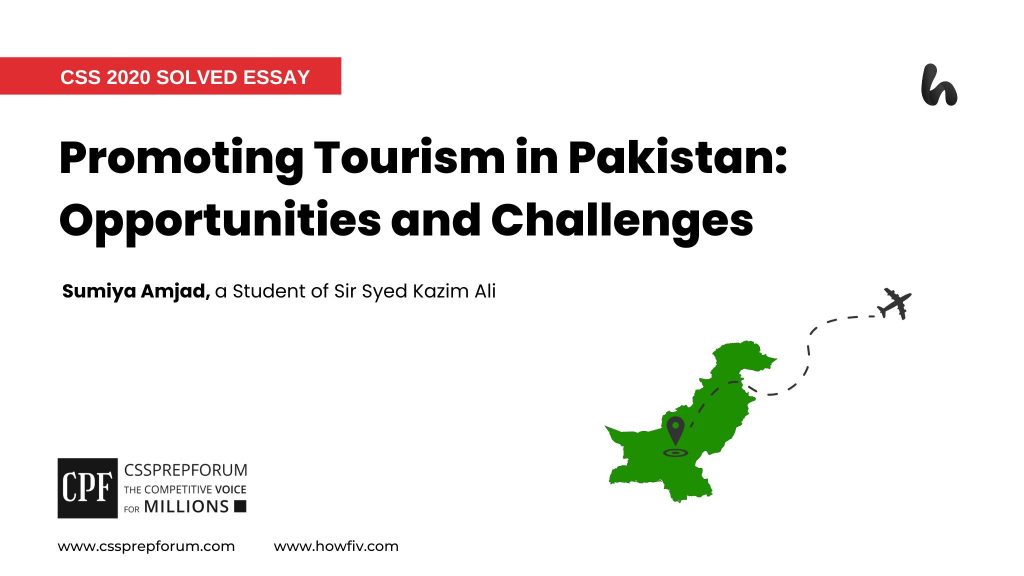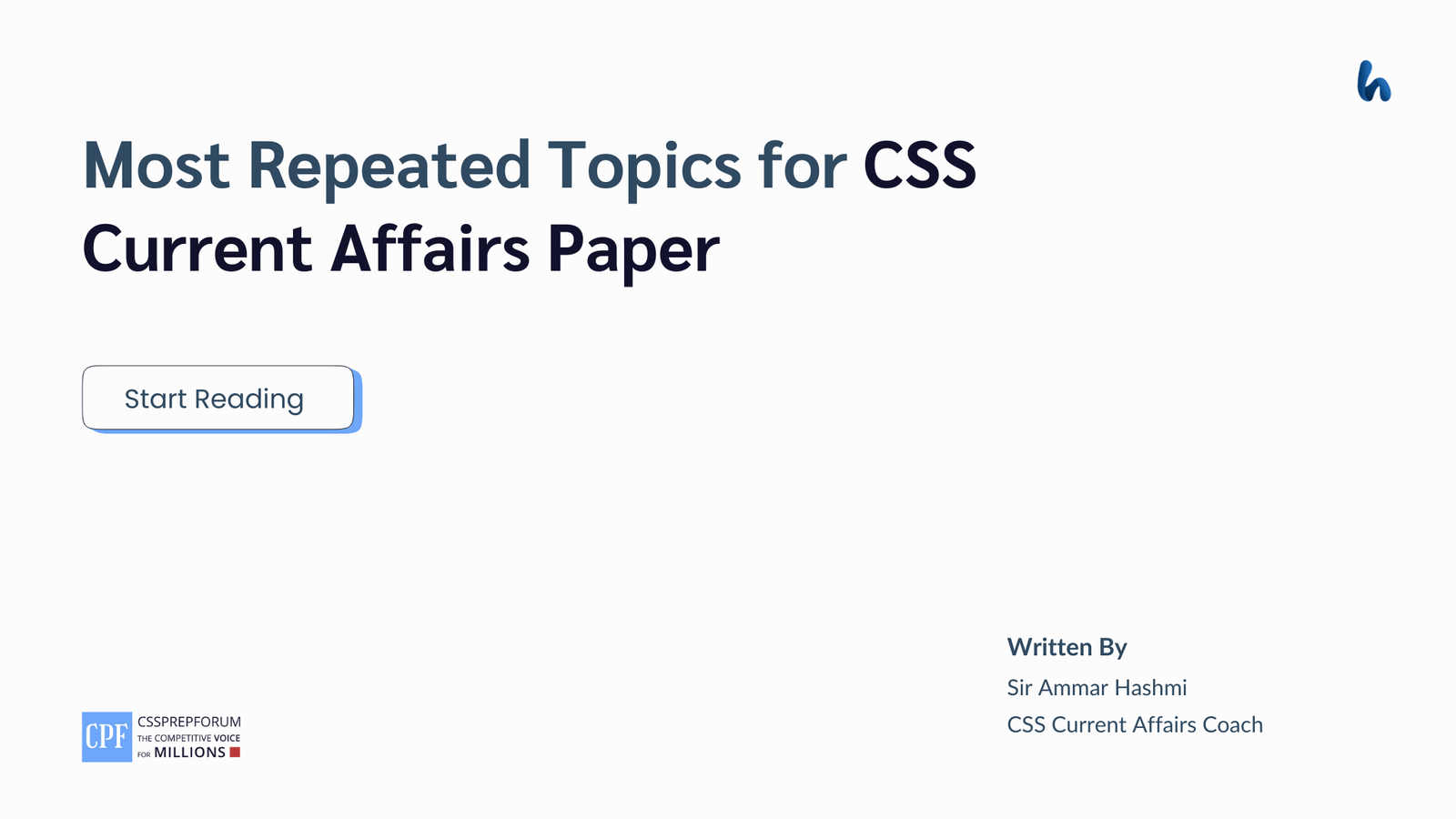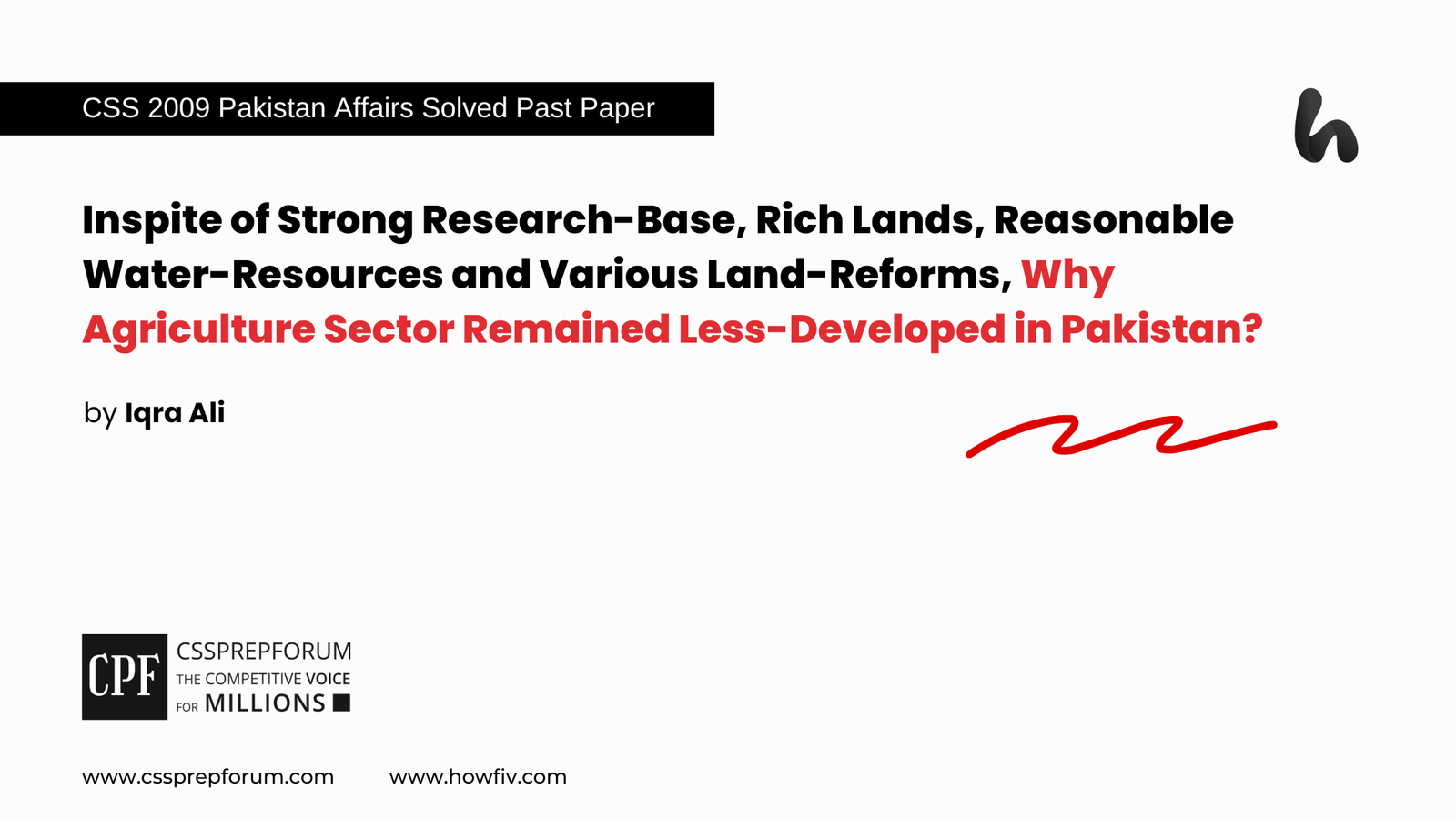CSS 2020 Solved Essays | Promoting Tourism in Pakistan: Opportunities and Challenges
Sumiya Amjad, a Sir Syed Kazim Ali student, has attempted the CSS 2020 essay “Promoting Tourism in Pakistan: Opportunities and Challenges” on the given pattern, which Sir Syed Kazim Ali teaches his students. Sir Syed Kazim Ali has been Pakistan’s top English writing and CSS, PMS essay and precis coach with the highest success rate of his students. The essay is uploaded to help other competitive aspirants learn and practice essay writing techniques and patterns to qualify for the essay paper.

Outline
1- Introduction
- ✓Pakistan’s tourism industry highlights the country’s stunning natural landscape.
- ✓Travel and tourism have significantly contributed to Pakistan’s GDP, amounting to US$7.6 billion.
- ✓Promoting Pakistan as a thriving tourist destination is essential for unlocking the country’s immense tourism potential.
2- Importance of the Tourism Industry
- ✓For a global perspective
- ✓For Pakistan’s economy and international image
3- Opportunities for Tourism in Pakistan
- ✓Rich cultural heritage and historical sites unlock the versatility of Pakistani culture.
- Case in Point: UNESCO World Heritage Sites in Pakistan, such as Taxila, Lahore Fort, and Mohenjo-Daro, increase the number of tourists visiting cultural sites.
- ✓Natural wonders and landscapes give breathtaking experiences to tourists.
- Case in point: The Northern areas of Pakistan, including Swat Valley, Hunza, and Naran Kaghan.
- ✓Diverse wildlife and Eco-tourism potential to promote conservation efforts.
- Case in Point: National parks and wildlife reserves, including the elusive Himalayan brown bear, graceful ibex, majestic golden marmots, and a plethora of avian species
- ✓Religious and cultural festivals showcase the vibrancy of Pakistani traditions.
- Case in point: BBC’s coverage of various historical sites of Buddhism, Sikhism, Sufi shrines, and the Shandur Polo Festival in Pakistan.
- ✓Handicrafts and traditional arts reflect Pakistan’s artistic heritage.
- Case in point: According to the World Crafts Council report, the craftsmanship and intricate designs of Pakistani artisans in areas like pottery, textiles, embroidery, and woodwork is renowned globally.
- ✓Adventure sports embrace the thrills of Pakistan’s natural playground.
- Case in Point: According to the Pakistan Adventure Tourism Survey 2021, the country organizes various adventure sports activities, such as mountaineering, trekking, white-water, rafting, para-gliding, and hang gliding.
- ✓Culinary tourism relishes the rich flavours of Pakistan’s gastronomic heritage.
- Case in Point: CNN’s documentary “Taste of Pakistan “showcases the diverse and delectable cuisine of the country, garnering millions of views and sparking interest among food enthusiasts worldwide.
4- Challenges in Promoting Tourism in Pakistan
- ✓Security concerns hinder the true essence of tourism in Pakistan
- Case in Point: The World Tourism Organization (UNWTO) emphasizes that enhancing security measures and creating a safe environment for tourists is essential for rebuilding confidence in Pakistan’s tourism industry.
- ✓Insufficient infrastructure discourages both domestic and international travellers.
- Case in point: The World Bank’s Infrastructure Data Report identifies Pakistan’s infrastructure limitations as a major hindrance to unlocking its tourism potential.
- ✓Political instability navigates the negative impact on tourism growth.
- Case in point: The Economist Intelligence Unit Country Risk Report 2021 shows political uncertainty hinders tourism in Pakistan.
- ✓Environmental degradation declines the charms of tourist attractions.
- Case in point: The WWF 2019 report shows the importance of preserving Pakistan’s biodiversity.
- ✓Negative media portrayal damages the perception of Pakistan.
- Case in point: A study by the Pew Research Center reveals that media portrayal has deep influences on tourists’ perceptions.
- ✓Lack of trained personnel hampers human resources for tourism.
- Case in point: The Pakistan Tourism Development Corporation emphasizes the urgent need for training and capacity building to meet the demands of the growing tourism industry.
- ✓Seasonal constraints affect year-round tourism.
- Case in point: The Pakistan Meteorological Department’s climate data shows the impact of extreme weather conditions on tourist seasons.
5- Recommendations for Sustainable Growth in the Tourism Industry
- ✓Strengthening security measures
- ✓Improving infrastructure and connectivity
- ✓Promoting community-based tourism
- ✓Implementing eco-friendly practices and waste management systems
- ✓Creating collaborative efforts between the government and private sector
- ✓Arranging tourism promotion campaigns
- ✓Organizing skill development programs
- ✓Upgrading transportation infrastructure
6- Critical Analysis
7- Conclusion

Tourism, as a catalyst for economic growth and cultural exchange, plays a pivotal role in shaping a nation’s identity and global standing. Similarly, Pakistan’s tourism industry plays a significant role in showcasing the breathtaking natural beauty of the country to the world. The country, adorned with diverse natural beauty ranging from the mighty Himalayas to the serene beaches of the Arabian Sea, is a mesmerizing tapestry of landscapes that captivates the soul. The allure extends beyond its picturesque vistas as the country boasts a colourful culture, vibrant cities, and historic landmarks, adding to its allure as a South Asian gem. Within the rich tapestry lies the immense potential for tourism, which has made significant contributions to the country’s economy. According to The World Travel and Tourism Council Reports 2016, the direct contribution of travel and tourism to Pakistan’s GDP has been a substantial US$7.6 billion (PKR 793.0 billion), constituting 2.7% of the total GDP. This figure is expected to soar, with the government predicting tourism to contribute ₨1 trillion (US$6.0 billion) by 2025. Furthermore, tourism is not only a lucrative revenue generator but also a vehicle for promoting a country’s culture and civilization. In this regard, Pakistan stands as an undiscovered treasure trove. Beyond its natural beauty, Pakistan boasts an abundance of historical, religious, archaeological, and adventurous sites that possess a magnetic allure for global tourists, such as Mohenjo-Daro and Taxila, the religious sanctity of Kartarpur Corridor, the mystique of Sufi shrines, and the adrenaline of adventure sports. Despite the treasure trove of opportunities, Pakistan’s tourism industry has faced challenges that have hindered its full potential. Like security concerns arising from past incidents, the lack of advanced and sufficient infrastructure, and inadequate promotion activities. However, these challenges, though daunting, are not insurmountable. By addressing security issues, investing in infrastructure, and embracing effective marketing strategies, Pakistan can forge a path toward sustainable growth in its tourism sector. In a nutshell, with strategic planning and unwavering commitment to responsible tourism, the nation can redefine its narrative, drawing travellers from every corner of the world to witness the magic that lies within its borders.

The tourism industry stands as a powerhouse in the global economy. It not only generates substantial revenue but also creates employment opportunities, fosters cultural exchange, and promotes sustainable development. On a global scale, the tourism industry serves as a vital driver of international trade, stimulating investments in hospitality, transportation, and infrastructure sectors. For Pakistan, the tourism industry bolsters the economy, creates job opportunities, and enhances the country’s global image as an enticing destination. As tourists explore the country, they contribute to the growth of rural economies, encouraging the preservation of traditional arts and crafts. Hence, the significance of the tourism industry cannot be ignored.
The tourism sector in Pakistan has tremendous potential because the country boasts a rich cultural heritage and is home to numerous historical sites that unlock the versatility of Pakistani culture. For instance, UNESCO World Heritage Sites such as Taxila, Lahore Fort, and Mohenjo-Daro attract a significant number of tourists interested in exploring cultural sites. These sites provide a glimpse into the country’s ancient civilizations, showcasing the architectural brilliance, intricate artwork, and historical significance of the region. Tourists can immerse themselves in the country’s vibrant history and gain a deeper understanding of its cultural tapestry. Moreover, the northern areas of Pakistan offer breathtaking experiences to tourists. Destinations like Swat Valley, Hunza, and Naran Kaghan are renowned for their stunning natural landscapes. These scenic locations provide opportunities for hiking, camping, photography, and nature appreciation and attract nature enthusiasts and adventure seekers from around the globe. Furthermore, the country is home to national parks and wildlife reserves, preserving the habitat of various species. Tourists can witness the elusive Himalayan brown bear, graceful ibex, majestic golden marmots, and a plethora of avian species in their natural habitats. Thus, Eco-tourism promotes conservation efforts by raising awareness about the importance of protecting these unique ecosystems and supporting local communities. Additionally, the country’s religious and cultural festivals showcase the vibrancy of its traditions. From the ancient ruins of Buddhist and Sikh sites to the Sufi shrines and the Shandur Polo Festival, numerous celebrations offer a glimpse into the country’s diverse heritage. The BBC’s coverage of these festivals and historical sites has further increased international interest and awareness, attracting tourists who seek to explore the spiritual and cultural dimensions of Pakistan. Likewise, Pakistani handicrafts and traditional arts reflect the country’s artistic heritage. Artisans showcase their craftsmanship and intricate designs in pottery, textiles, embroidery, and woodwork. Fortunately, their work has gained recognition globally, and the World Crafts Council has acknowledged the excellence of Pakistani artisans. As a result, cultural exchange has been promoted, and local economies have been supported. Similarly, the country hosts mountaineering expeditions, trekking routes through breathtaking mountain ranges, white-water rafting in wild rivers, and thrilling activities like para-gliding and hang gliding. The Pakistan Adventure Tourism Survey 2021 highlights the variety of adventure sports available, attracting adrenaline enthusiasts who seek thrilling experiences in a picturesque setting. Last but not least, Pakistani cuisine is a blend of flavours influenced by various regions and cultures. Culinary tourism allows visitors to savour Pakistan’s rich and diverse gastronomic heritage. CNN’s documentary “Taste of Pakistan” has showcased the country’s cuisine to a global audience, generating interest among food enthusiasts. In summary, Pakistan offers a wide range of tourism opportunities. Its rich cultural heritage provides a unique and immersive experience for travellers. By capitalizing on these strengths, Pakistan can attract more tourists and boost its tourism industry while showcasing the country’s hidden gems to the world.
Despite the treasure trove of opportunities, Pakistan’s tourism industry has faced many challenges that have hindered its full potential. First and foremost, security concerns hamper the true essence of tourism in Pakistan by creating a climate of fear and uncertainty among potential travellers. To address the uncertainty arising from security concerns, the World Tourism Organization (UNWTO) emphasizes the need to enhance security measures and create a safe environment for tourists to rebuild confidence in Pakistan’s tourism industry. Second, insufficient infrastructure in Pakistan poses a significant deterrent for both domestic and international travellers. Poor road networks, limited transportation options, and inadequate facilities at tourist sites lead to inconveniences and difficulties during travel and deter tourists from venturing beyond their immediate surroundings, limiting the exploration of the country’s diverse landscapes and cultural treasures. The World Bank’s Infrastructure Data Report underscores the urgent need for investment in upgrading and expanding infrastructure to cater to the growing demands of the tourism industry. Third, political instability and environmental degradation act as formidable barriers that diminish the charm of tourist attractions in Pakistan. Political instability, as highlighted in The Economist Intelligence Unit Country Risk Report 2021, introduces uncertainty, creating an unfavourable climate for tourism. Frequent changes in government policies, civil unrest, and security concerns deter potential tourists who seek safety when planning their travel. In the latter case, the degradation of natural habitats, pollution, and deforestation not only erodes the charm of once-pristine locations but also diminishes the unique experiences that visitors seek. So, addressing environmental degradation is paramount for Pakistan to maximize the allure of its tourist attractions. As exemplified in the WWF 2019 report, preserving Pakistan’s biodiversity is of utmost importance in ensuring the long-term sustainability of its tourist attractions. Fourth, media portrayals and a lack of trained personnel are also limiting the potential of the tourism industry in Pakistan. Negative media portrayals provoke potential visitors to choose to explore other destinations without fully experiencing the wonders Pakistan has to offer. A Pew Research Center study also reveals that negative media coverage can significantly shape the decision-making process for potential travellers, leading to a decline in tourist arrivals. Moreover, the lack of trained personnel skills in hospitality, tour guiding, customer service, and language proficiency prevents the tourism industry from providing satisfactory experiences for tourists, resulting in reduced visitor satisfaction and repeat visits. Lastly, seasonal issues affect year-round tourism in Pakistan, posing challenges for both domestic and international travellers. During the scorching summer months, travellers often flock to the serene Northern areas to escape the heat and revel in the beauty of lush valleys and glistening lakes. However, these regions become less accessible due to heavy land sliding, limiting travel options and restricting certain activities. Similarly, the coastal areas of Pakistan offer a respite from the summer heat and attract tourists. However, the onset of the monsoon season brings torrential rains, which disrupt travel plans and hinder beach tourism. So, seasonal constraints affect the livelihoods of local communities that rely on tourism, leading to economic challenges.
The following recommendations can be considered to achieve sustainable growth in Pakistan’s tourism industry. First of all, enhancing security measures is crucial to address safety concerns and instil confidence in tourists. It involves increasing the presence of law enforcement agencies in tourist areas, implementing effective surveillance systems, and providing training to security personnel to ensure the safety of visitors. Moreover, investing in infrastructure development is essential to improve accessibility and enhance the overall tourism experience. It includes improving road networks, upgrading airports, and expanding transportation options to connect tourist destinations, ensuring reliable and high-speed internet connectivity and access to information for tourists. Further, encouraging community participation and involvement in tourism activities also has numerous benefits. It helps to empower local communities, generate income, preserve cultural heritage, and create a more authentic and sustainable tourism experience. Likewise, emphasizing sustainable tourism practices is crucial for preserving natural resources and protecting the environment. Implementing eco-friendly practices, such as promoting responsible tourism, reducing plastic waste, and supporting initiatives for energy conservation, can contribute to the long-term sustainability of the tourism industry. Besides, collaboration between the government, private sector, and local communities is essential for sustainable growth in the tourism industry. Encouraging public-private partnerships, fostering dialogue, and involving stakeholders in decision-making processes can lead to more effective and coordinated efforts in developing and promoting tourism. Additionally, investing in tourism promotion campaigns, both domestically and internationally, can raise awareness of Pakistan as a tourism destination. These campaigns can highlight the country’s unique attractions and cultural heritage, help reach a wider audience, and attract more tourists. Similarly, providing training and skill development programs for tourism professionals is crucial for improving service quality and enhancing the overall visitor experience. Last but not least, developing efficient and reliable transportation infrastructure is vital for improving accessibility to tourist destinations. Upgrading roads, expanding public transportation options, and enhancing connectivity between different regions can make it easier for tourists to navigate and explore the country. Hence, by implementing these recommendations, Pakistan can foster sustainable growth in its tourism industry. It will not only attract more visitors but also contribute to the economic development of the country, preserve cultural heritage, protect the environment, and empower local communities.
Critically, Pakistan’s potential for religious and cultural tourism is a remarkable asset that can elevate the nation’s economy and global standing. By strategically focusing on accessibility, multicultural celebrations, and responsible conservation efforts, Pakistan can unlock the true essence of its tourist attractions and create a vibrant and sustainable tourism industry.
In a nutshell, Pakistan possesses significant potential for tourism growth, thanks to its diverse cultural heritage, natural landscapes, and warm hospitality. However, several challenges need to be addressed to ensure sustainable development in the tourism industry. Strengthening security measures, improving infrastructure, promoting community-based tourism, implementing eco-friendly practices, fostering collaboration, and upgrading transportation infrastructure are important steps toward achieving sustainable growth.

CSS Solved Past Papers’ Essays
Looking for the last ten years of CSS and PMS Solved Essays and want to know how Sir Kazim’s students write and score the highest marks in the essays’ papers? Then, click on the CSS Solved Essays to start reading them.
CSS Solved Essays
CSS 2020 Solved Essays
Are you searching for CSS 2020 solved essays by Sir Syed Kazim Ali’s students? Click on any of the topics to start reading the solved essays.
| 1 | Do We really need literature in our lives? |
| 2 | Women universities as agents of change. |
| 3 | Pakistan and the future of Kashmir cause. |
| 4 | Polarized politics: the issues and challenges of democracy in Pakistan. |
| 5 | Global power dynamics and Pakistan’s foreign policy. |
| 6 | Pakistan’s informal economy: the way forward |
| 7 | Promoting tourism in Pakistan: opportunities and challenges. |
| 8 | I Do Not Agree With What You Have To Say, But I Will Defend To Death Your Right To Say It |
| 9 | Is Pakistan ready for digital revolution? |
| 10 | IMF Bailouts: Roads to Stability or Recipes for Disaster |
CSS Solved General Science & Ability Past Papers
Want to read the last ten years’ General Science & Ability Solved Past Papers to learn how to attempt them and to score high? Let’s click on the link below to read them all freely. All past papers have been solved by Miss Iqra Ali & Dr Nishat Baloch, Pakistan’s top CSS GSA coach having the highest score of their students. General Science & Ability Solved Past Papers
Articles Might Interest You!
The following are some of the most important articles for CSS and PMS aspirants. Click on any to start reading.












